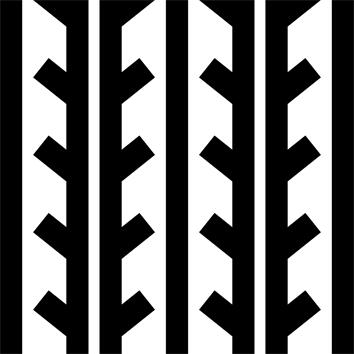This tyre is suited for road cycling on rolling and uneven terrain. 510 g.
How to measure tyre wear
To measure the wear on your road tyres and to know when they need replacing, you need to inspect the tread. Signs of wear include:
- tread starting to fray
- the appearance of a series of micro cracks
- low tread depth
- the carcass becomes visible.
In all these cases the tyre is worn and needs replacing.
How to remove a tyre
To remove your tyre, deflate the inner tube until no more air comes out.
Once deflated, use a tyre lever to remove the tyre from the rim.
How to fit a tyre
To put the tyre back on, place one side of the tyre into the rim. Next, inflate your inner tube to approximately 30% before putting it into the tyre (inflating it beforehand reduces the risk of pinching the inner tube). Then, insert the other side of the tyre into the rim, starting on the side opposite the valve. Before inflating the inner tube all the way, check to make sure it isn't pinched between the tyre and the rim.
How to inflate your tyre correctly
Inflate your tyre carefully. The recommended pressure is indicated on the tyre's sidewall and its product sheet (available online).
Before each outing, make sure that your tyres are at the correct pressure for your ride.
Tip from the pros
When inflating your tyre, make sure you inflate it to the suitable pressure for the terrain you will be riding on and, above all, the weather conditions you will be riding in. When riding in rainy weather, lower the tyre pressure to increase the tyre's traction. When riding in dry weather, you can increase the pressure for better performance.
A comfortable bike tyre with anti-puncture reinforcement.
Grip
Tread with "aquaflow" technology, providing very good grip in all conditions.
Puncture resistance
Double-shielding puncture protection.
Efficiency
28 mm cross section for a high performance tyre and a comfortable ride.
Compatibility
For 700x18 to 700x23 inner tubes and 700 (28 inch) wheels.
This tyre is suited for road cycling on rolling and uneven terrain. 510 g.











